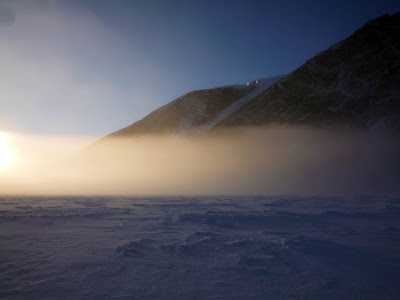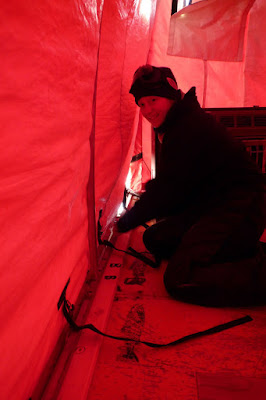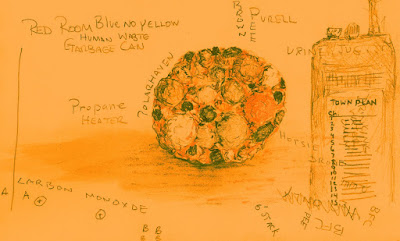One of our most interesting sampling sites is situated at the base of Double Curtain Glacier in the Ferrar Valley. The sea ice there is usually very thick (7 meters or more), and the transition region is littered with many hundreds of scallop shells and the freeze-dried remains of other benthic critters lifted to the surface.
The seafloor at this site is stark, dominated by anchor ice as well as large boulders that gather Antarctic moss while they roll down the steep slope of the adjacent hill. A lens of supercooled fresh water from the nearby Ferrar Glacier freezes instantly when a drill bit makes contact, confounding efforts to fashion a dive hole. It's a magnificent place to lay down tools, open eyes, flare nostrils, and taste the cold air.
When sea fog rolls in, I'm struck by the solitude of working in Antarctica. Isolation triggers shivers more often than the temperature does.

A few sparks of light on Double Curtain Glacier as the sun sets

Tense moments later, their Skidoo light appears from the fog ...
Why does this particular trip stay close to mind? There are times when Antarctica stabs the heart in very fundamental ways, and begs you to ask if your companions are safe.

















